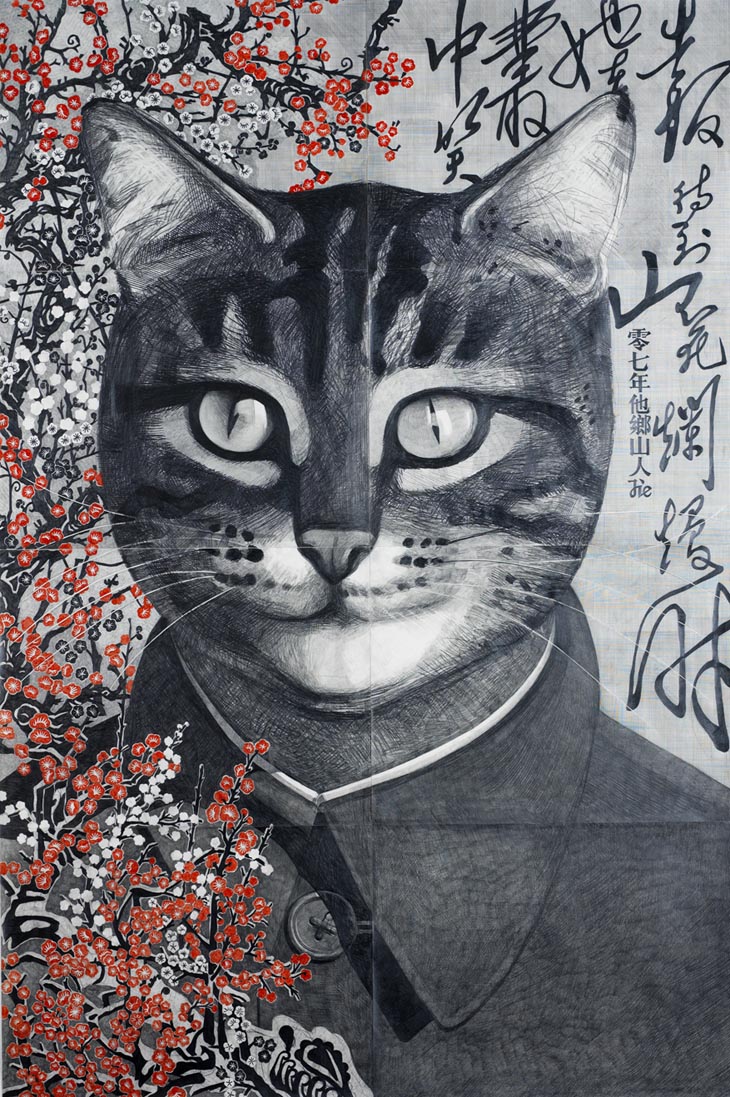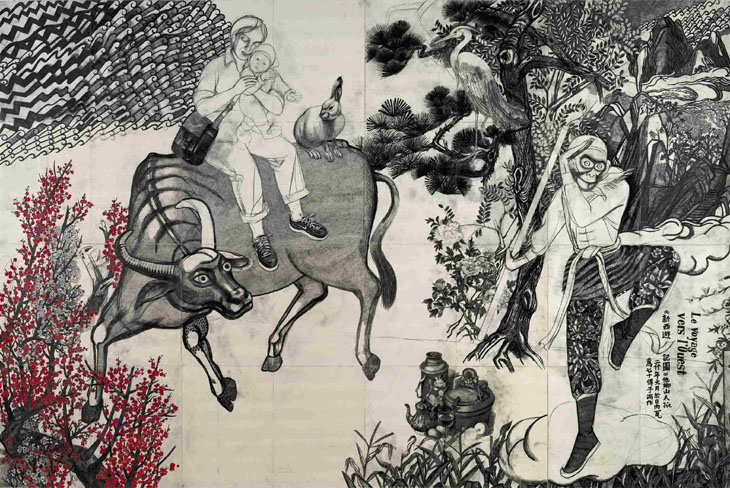

Qiu Jie
Qiu’s Portrait of Mao is a humorous play on words: "mao" means "cat" in Chinese. In traditional Chinese painting, an image of a cat holds special significance. Often coupled with a butterfly (to create "mao-die" or "long life"), it can be used to bestow a blessing. Rendered with the pastoral detail and calligraphy inscription of Song Dynasty masterworks, Qiu’s drawing takes equal inspiration from eastern philosophies of beauty and wisdom and the kitsch populism of western artists such as Cassius Coolidge (of Dogs Playing Poker fame). Meticulously drafted in lead on paper, Qiu’s sentimental homage offers a surrealist vision that’s alchemically toxic, and seductively coy.
Having trained in both Chinese high-realism and European multi-media schools and worked professionally as a decorator and designer, Qiu Jie’s drawings are informed from a wide range of aesthetic influence. ‘Qiu Jie’ itself is an adopted pseudonym: meaning ‘foreigner’ or ‘outsider’, conjuring images of a mysterious stranger negotiating the terrains of imagination. This sense of myth-making, exotica, and expedition is reflected through Qie’s work.
Executed in massive scale, and taking months to complete, Qiu’s pencil drawings are achievements of awesome endeavour. His painstaking process is canonised in the timeless quality of his images, which merge the styles and iconography of ancient Chinese art with traditional and contemporary Western imagery and references.
In Pèlerinage Vers L’Ouest, Qiu appropriates the Christian theme of the Flight Into Egypt. Infusing the decorative intricacy associated with age-old artisanship with a narrative surrealism, Qiu’s modern day mother and child are woven into the fabric of Eastern consciousness – pictured heading to their exile from an uncustomary direction, and sat astride a bull, the Chinese symbol of life. Rendered on a composite ground of multiple sheets of paper, the fragmented surface gives the drawing an authenticated effect of historical artefact.

